 Here Are Some Adrenaline Pumping Experiences From Auto Expo 2025 That You Should Not Miss!
Here Are Some Adrenaline Pumping Experiences From Auto Expo 2025 That You Should Not Miss!
 Hyundai Creta Electric Reaches Dealerships, Check It Out In 9 Images!
Hyundai Creta Electric Reaches Dealerships, Check It Out In 9 Images!

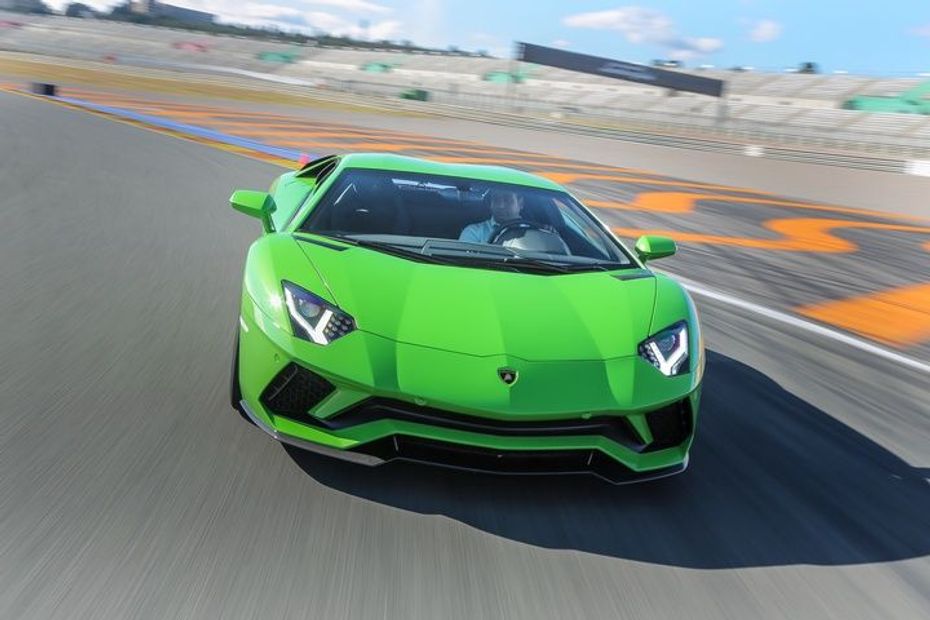
I’d first met the Aventador at the Sepang International Circuit in Malaysia, a few years back. It looked stunning in the flesh, and I was in awe of the ruthlessness with which the V12 sent 700 horses to the wheels. Back then, on-track sessions convinced it is one of the purest forms of motoring brutality – acceleration and gunshot-like gearshifts were borderline scary, while grip levels were nearly unshakeable. And as I sat slightly jet lagged, sipping my nth cup of coffee on the flight to Valencia to drive the Aventador S, I almost felt the V12’s sounds ricochet off Sepang’s empty grand stands and ring in my ears again. I wondered what it would take to better a car like that.
(Update: Lamborghini Aventador S Launched In India At Rs 5.01 Crore)
The supercar world has quite evolved since 2011 when the Aventador was launched, with hybrid tech and what not dominating spec sheets. Despite not having all that techno-wizardry, the Aventador has outsold its predecessor, the Murcielago by a huge margin. I for one am glad Lamborghini hasn’t resorted to downsizing engines or adding hybrid powertrains yet, and its naturally aspirated V12 continues to be the car’s biggest draw.

The press drive for the Aventador S was held at the Ricardo Tormo Circuit in Spain, yet another racetrack MotoGP fanatics worship. At the circuit we were informed that product presentations would happen after the track drive due to Spain’s tricky weather. We were hustled into the cars, and strapping myself in I almost mumbled a little prayer looking at the droplets of water on the windscreen. It isn’t every day that we journalists are faced with the daunting task of piloting a V12 engined supercar around a wet racetrack, after all.
I was waiting for a full download on the updates from Maurizio Reggiani, Director, R&D at Lamborghini, though I did have a fair idea as we headed out. There are design changes obviously, though they have been effected to aid performance first and then aesthetics. Spaceships, venomous snakes and jet fighters continue to inspire the design, and the jet fighter styled cover you flick to access the ignition switch is a detail that still tickles the nine-year old inside me. The rear wheel arch design is now a nod to the Countach’s, and is a nice touch.
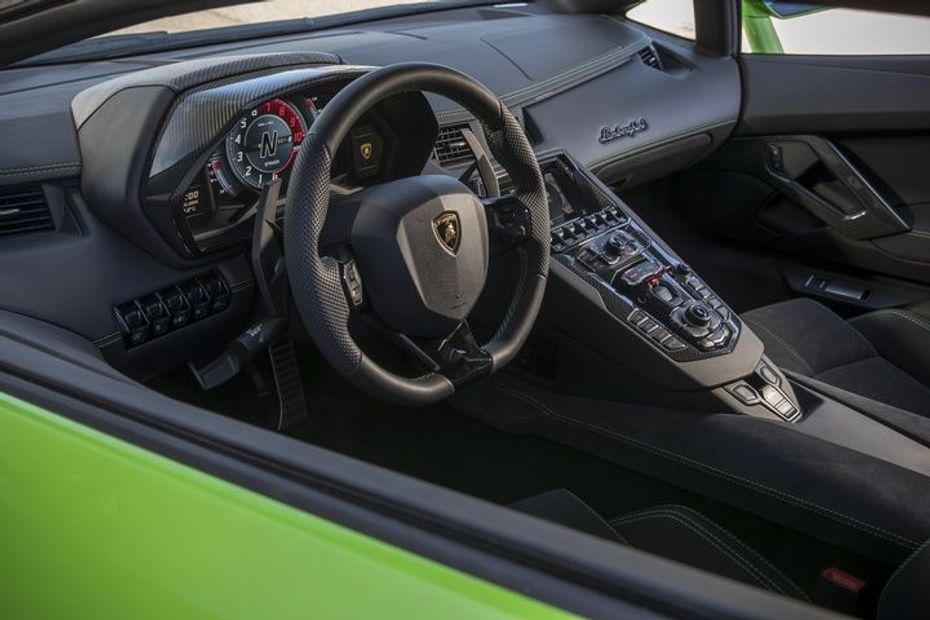
The Alcantara-swathed steering wheel and large, column-mounted paddle shifters mean business, while the revised display looks sharper, sportier and even more gaming console like. Interiors haven’t changed much, and the centre console has the same busy yet affable aura with fighter jet like switches. Of course, customers can customise the interiors, and Lamborghini says more than 50 percent of the cars sold last year were customised by buyers as part of its Ad Personam program.
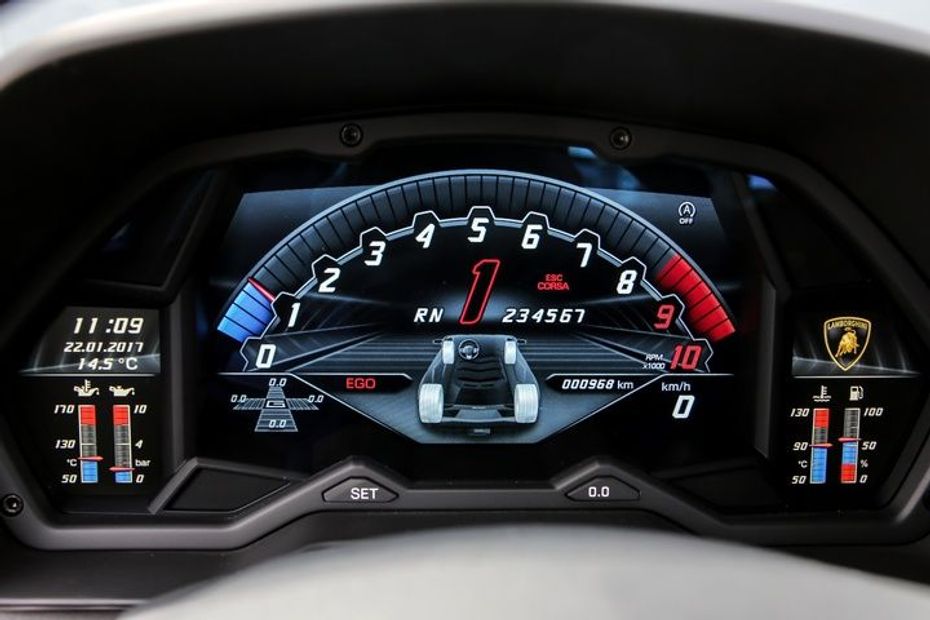
The car still looks a million dollars from the outside, and the design is as stunning as ever. The low stance, sharp edges and unmistakable silhouette are all too alluring to not transfix your gaze. That said, I didn’t find the new nose as pleasing as the older one. Lamborghini claims it improves aerodynamics immensely though, as the longer front splitter and new diffuser make for 130 percent more downforce. The redesigned front bumper channels air better to reduce turbulence at the front wheels at high speeds and also aids better cooling of the brakes. The rear wing is active as before and now gets 3 positions, which enhances aerodynamic efficiency by 50 percent, and these changes alone make the Aventador S a lot more than just an updated Aventador.
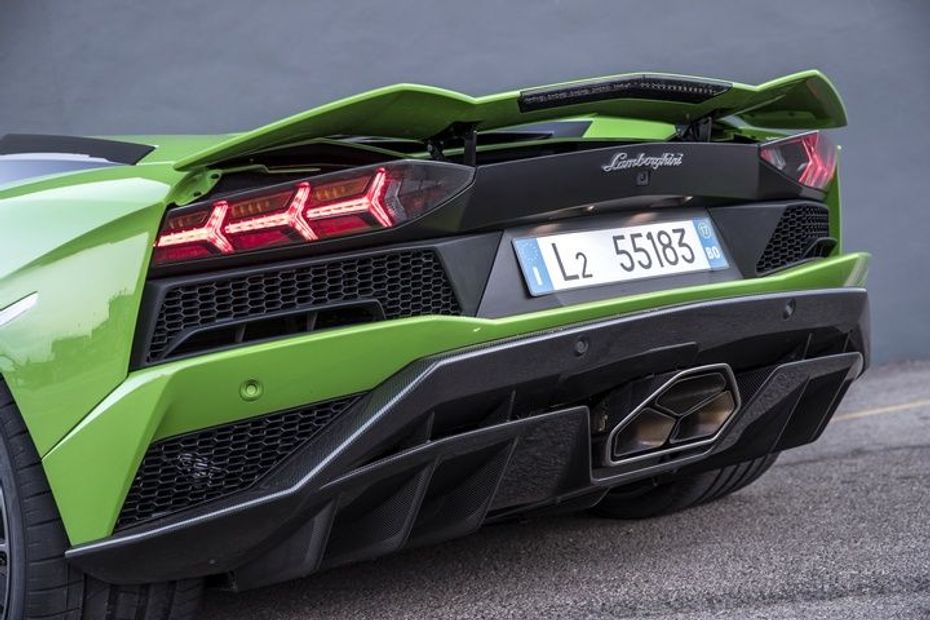
Adoption of four wheel steering is a bigger highlight and a first for a production Lamborghini, after the limited edition Centenario. We didn’t drive the standard Aventador on track, but a slalom course in both cars back to back made differences apparent. Rear wheels turn in the opposite direction of the steering input by up to 3 degrees at low speeds to shorten the wheelbase by up to 500mm, for a more direct feel and quicker turn in. And the S felt quicker to turn in, easier to make U-turns and needed lesser effort and steering input in the slaloms.
The rear wheels turn in the same direction as the front ones up to 1.5 degrees at high speeds, virtually lengthening the wheelbase by up to 700mm. This optimises stability and steering responses, and that’s a win in a car as powerful as the Aventador. On track the steering felt so precise and feedback-y, there was a moment when I knew any further input would cause understeer and that’s exactly what happened. Turns in were extremely precise while exits felt well-metered. This was also courtesy active torque distribution, which varies depending on the driving mode, with up to 90 percent torque being sent to the rear wheels in Sport mode.
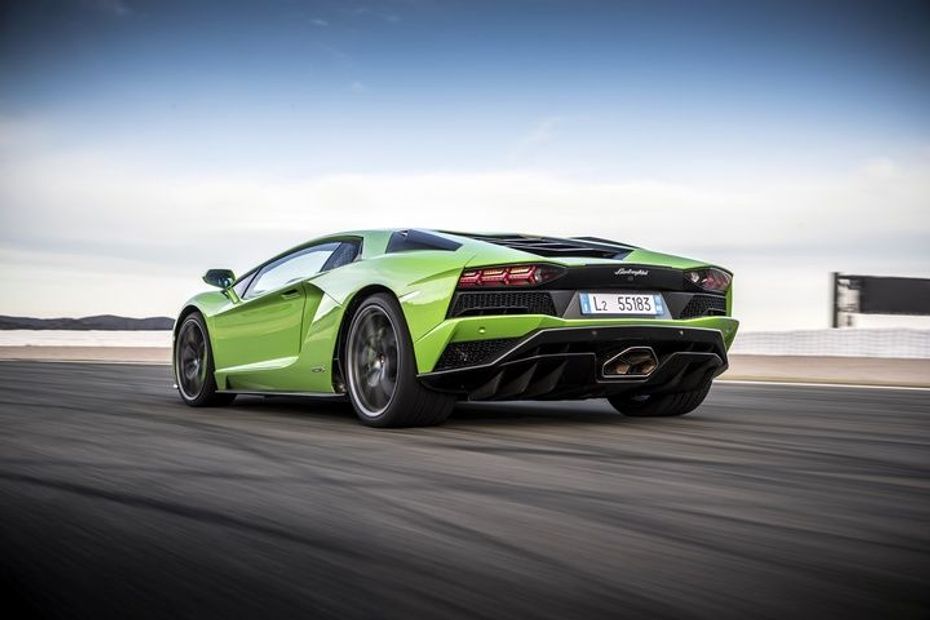
This offers the feel of a rear wheel drive car to improve agility and even offers controlled oversteer, in case you want to have the tail hanging out. I found that out the right way around the last corner, as an extra dab of the throttle had the tail step out on the slightly damp, cold asphalt. A quick steering correction had me catch the slide back and the tail was quick to straighten itself before the theatrics got out of hand. All the while, the naturally aspirated 6.5-litre V12 right behind my head was making for some ridiculously good acoustics.
The exhaust note is more sonorous thanks to the new exhaust, which is 20 percent lighter. And the engine is more powerful, obviously. You see, supercar power outputs are like the arms race between the superpowers of the world – more is never enough. The V12 now breathes better courtesy more efficient air intakes, improved variable valve timings and a higher rev range, up to 8500rpm from 8350rpm. The result is 740PS, up from 700, bringing it closer to the more exotic SV’s 750PS.

I’d never thought I would call a 6.5-litre V12 engine a screamer but that’s what this one is. The engine is quick to build revs, and with the higher output, claimed 0-100kmph time now stands at a staggering 2.9 seconds. The car can accelerate to 200kmph in under 9 seconds, before hitting 300kmph in 24.2 seconds says Lamborghini. And top speed, in case you’re interested, has been limited to 350kmph. The improved performance is enjoyable, primarily due to the way the power is put down. Acceleration is sure lethal, and corner exits were quicker, while acceleration down the straights was well, ridiculously quick.
Driving maps have been revised to add the new Ego mode, apart from the Strada, Sport and Corsa. Ego lets you customise powertrain, suspension and steering to your liking. You could thus choose to have powertrain set to Corsa, while suspension could be set to Strada and steering to Sport. We did try combinations, but on track, everything Corsa was the most enjoyable one, as the seatback-thrusting acceleration and gunshot-like gear changes were a treat to the senses.

Interestingly, Lamborghini has chosen to continue with the 7-speed, single-clutch, ISR (Independent Shifting Rod) transmission. Reggiani was particularly keen on explaining how it is the best solution in terms of dimensions and weight, and that a dual-clutch gearbox in a car as powerful as the Aventador would be far bigger and heavier. And I cannot deny that the ISR transmission is still brilliant. Each shift in Corsa mode is smile inducing, and there’s probably only a few single clutch transmissions in the world that can match up to the Aventador’s – it is an engineering marvel and adds to the car’s emotiveness.
And evoking strong emotion, says Lamborghini, is the first aim with the Aventador S. In fact, Lamborghini continues to hammer the nail right into the head with the naturally aspirated V12 engine. The more experienced European journalists with me were even quick to note the motor feels more refined now. With its kind of performance, it was ridiculously easy to see 240kmph down the main straight, before having to brake for the sweeping left hander that the first corner at Ricardo Tormo is. Carbon ceramic discs come as standard and were up for the task at all times, and I believe only some serious abuse would overheat them.
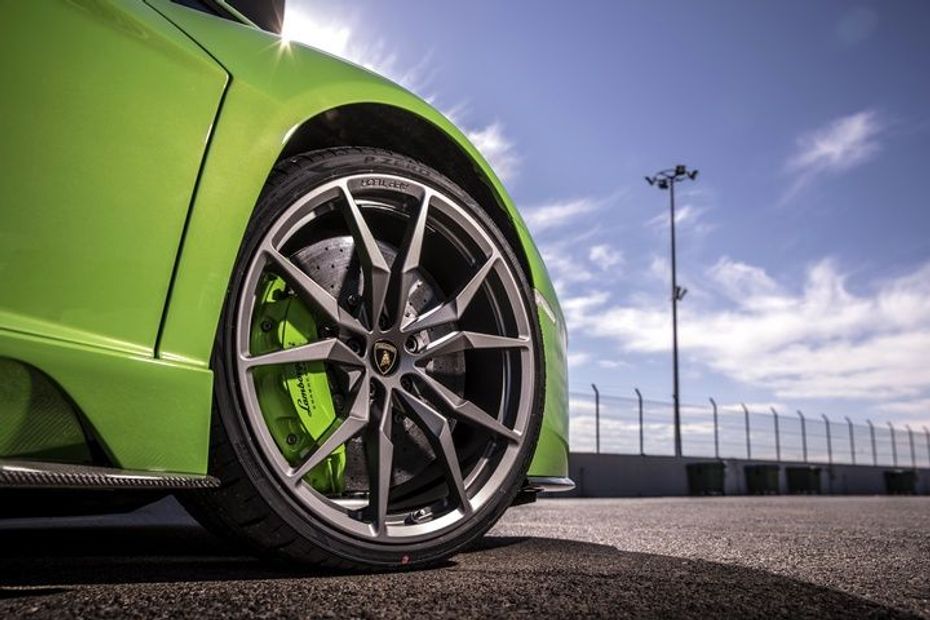
The horizontally mounted pushrod suspension at the rear has been reworked to handle steering duties, with a new set of springs and a variable damping system. The car continues to use the light weight, carbon fibre monocoque chassis, albeit with revisions that have helped make handling even more sublime. The Pirelli P Zero tyres have been revised as well, since the handling characteristics of a car with all-wheel steering are different. Grip levels are massive, especially from the super-wide, 355mm rear tyres.
As a supersports machine, the Aventador S has the ability to attack your senses with a viciousness you might not expect. I found myself gripping the hydraulically powered steering wheel with a vice-like grip a lot of times, despite being convinced the electronics had me covered. Thankfully, the sun was out by the time we were finishing our tracks sessions. I swung the scissor door open, and hopping out into the pitlane I couldn’t help but say to myself, “There’s few things in the world as thrilling as hitting 250kmph on a wet racetrack in a supercar”, remembering the first session in the morning on the cold, damp circuit. Little did I know, the Aventador S would prove me wrong in just a couple of hours, once I would head out on to Spain’s magnificent country roads.
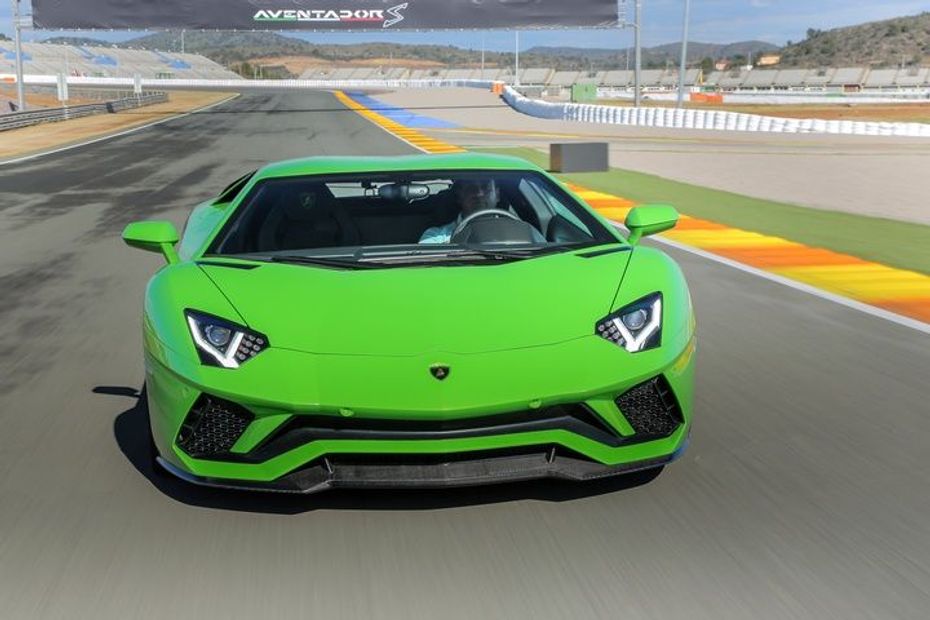
Despite the limited time on the road, I’m glad I took Lamborghini boss Stefano Domenicali’s advice and headed into the neighbouring hills before returning the car in Valencia. I set powertrain and suspension to Strada, but chose Sport for the steering. The initial few minutes were spent trying to comprehend how the car had turned into a much friendlier version of the beast it was on track, as the ride was better and power delivery even more progressive.
With no traffic, I literally had the roads to myself in a 740PS car, and innumerable fast chicanes, hair pin bends and various corners were devoured at a feverish pace. All wheel steering ensured very little input was required, while there was ample feel and feedback from the front end. The throttle response felt precise enough to notice the difference made by even the smallest of inputs from my right foot, and the throttle and steering together made for an extremely confident feel despite the car’s size and power output.
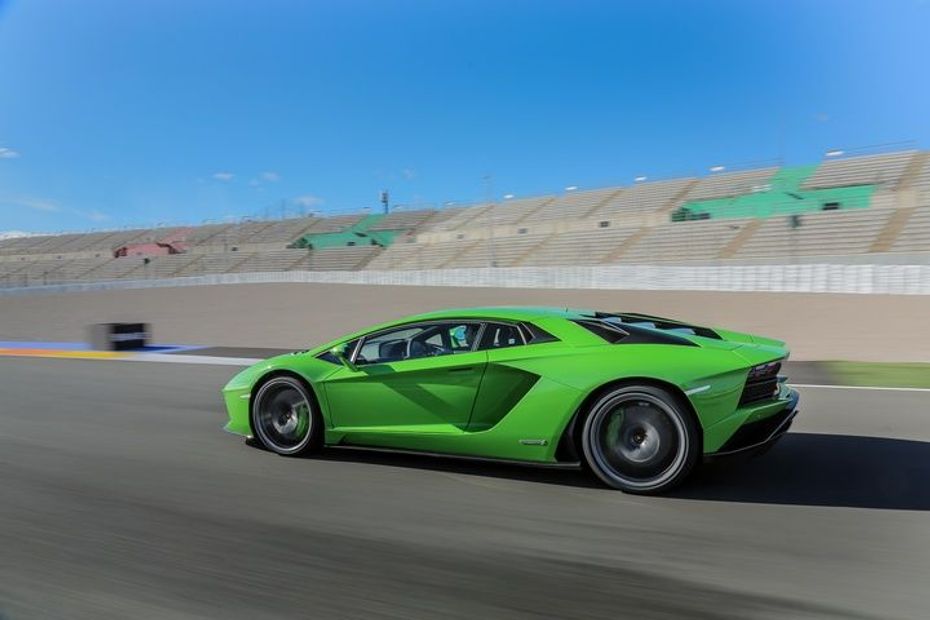
The V12 made for fantastic entertainment on the road as well, its sounds filling the hills, especially the crackles and pops on overrun. The suspension felt stiff but it didn’t threaten to break my back, and even gear changes were smoother, making for a more relaxed drive. The pace would have been a bit unnerving for a co-passenger, but from behind the wheel it was almost unbelievable how easy it was to push a 740PS car hard on the road.
It has taken Lamborghini about two years to turn the Aventador into the Aventador S, and the results are brilliant. The car promises to thrill you not just with its manic straightline performance, but around corners and on the road too. A day behind its wheel had me convinced the Aventador S is not only easier and friendlier to drive, but a better supersports car to live with as well. It also gets start-stop and cylinder deactivation, which shuts down one bank of 6 cylinders in the V at part throttle to aid efficiency.
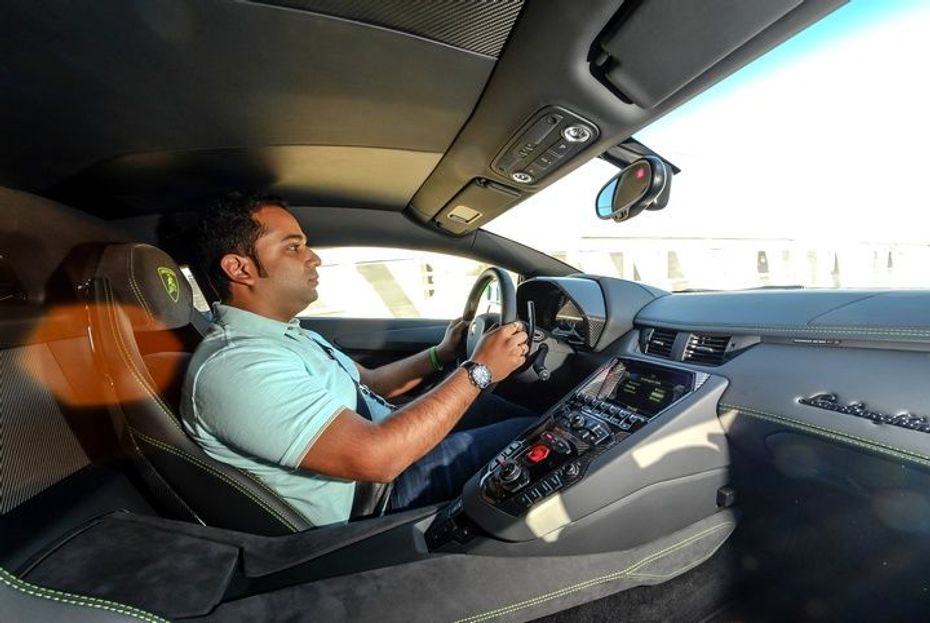
Then there’s the addition of Apple CarPlay, which may be a small addition to the feature list but is a significant one. The car also features decent luggage space under the hood, which should allow you to put in a bag or two, giving it some bit of practicality. The Aventador (thankfully!) continues to remain one of the few supersports cars to stay away from sins like turbocharging and hybrid powertrains, and Domenicali says the V12 isn’t going away anytime soon, which is good news for purists.
While the car’s friendlier character is certainly welcome, the men at Sant’Agata Bolognese have ensured the big bull is back with a vengeance, and it isn’t just more powerful, but is also sharper, more emotive and more fun. The Aventador S has been launched in India at a starting price of Rs 5.01 crore ex-showroom, which is actually lesser than the standard Aventador's price. With an asking price like that, it certainly isn’t a car for everybody. Only a select few will be able to afford it, but there’s no two ways about the fact that the flagship Lamborghini just got a lot more special in the form of the Aventador S.
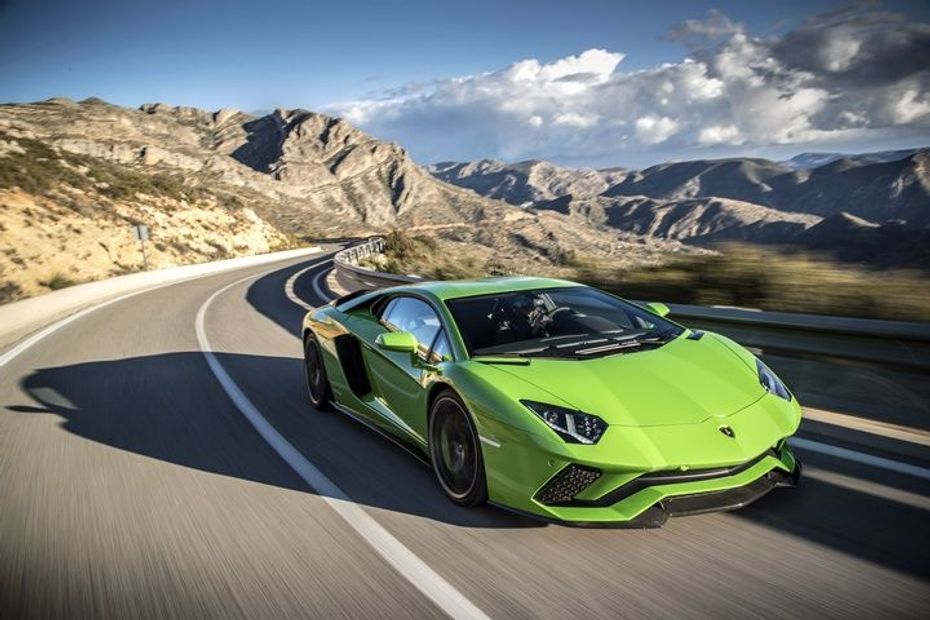
 Bentley Continental
Bentley Continental
 Aston Martin DBX
Aston Martin DBX
India's largest automotive community
 Here Are Some Adrenaline Pumping Experiences From Auto Expo 2025 That You Should Not Miss!
Here Are Some Adrenaline Pumping Experiences From Auto Expo 2025 That You Should Not Miss!
 All You Need To Know About The Surprise Element At Auto Expo 2025: BMW iX1 LWB
All You Need To Know About The Surprise Element At Auto Expo 2025: BMW iX1 LWB
 Hyundai Creta Electric Reaches Dealerships, Here’s A List Of Its Pros And Cons Before You Check It Out!
Hyundai Creta Electric Reaches Dealerships, Here’s A List Of Its Pros And Cons Before You Check It Out!
 MG Showcases A PHEV At Auto Expo 2025: The MG HS PHEV
MG Showcases A PHEV At Auto Expo 2025: The MG HS PHEV
 Lamborghini Urus
Rs. 4.18 Crore
Lamborghini Urus
Rs. 4.18 Crore
 Lamborghini Revuelto
Rs. 8.89 Crore
Lamborghini Revuelto
Rs. 8.89 Crore
 Lamborghini Huracan EVO
Rs. 4.00 Crore
Lamborghini Huracan EVO
Rs. 4.00 Crore
 Land Rover Range Rover
Rs. 2.36 Crore
Land Rover Range Rover
Rs. 2.36 Crore
 Volvo XC90
Rs. 1.00 Crore
Volvo XC90
Rs. 1.00 Crore
 Mercedes-Benz GLA
Rs. 50.80 Lakh
Mercedes-Benz GLA
Rs. 50.80 Lakh
 Toyota Vellfire
Rs. 1.22 Crore
Toyota Vellfire
Rs. 1.22 Crore
 Porsche 911
Rs. 1.98 Crore
Porsche 911
Rs. 1.98 Crore